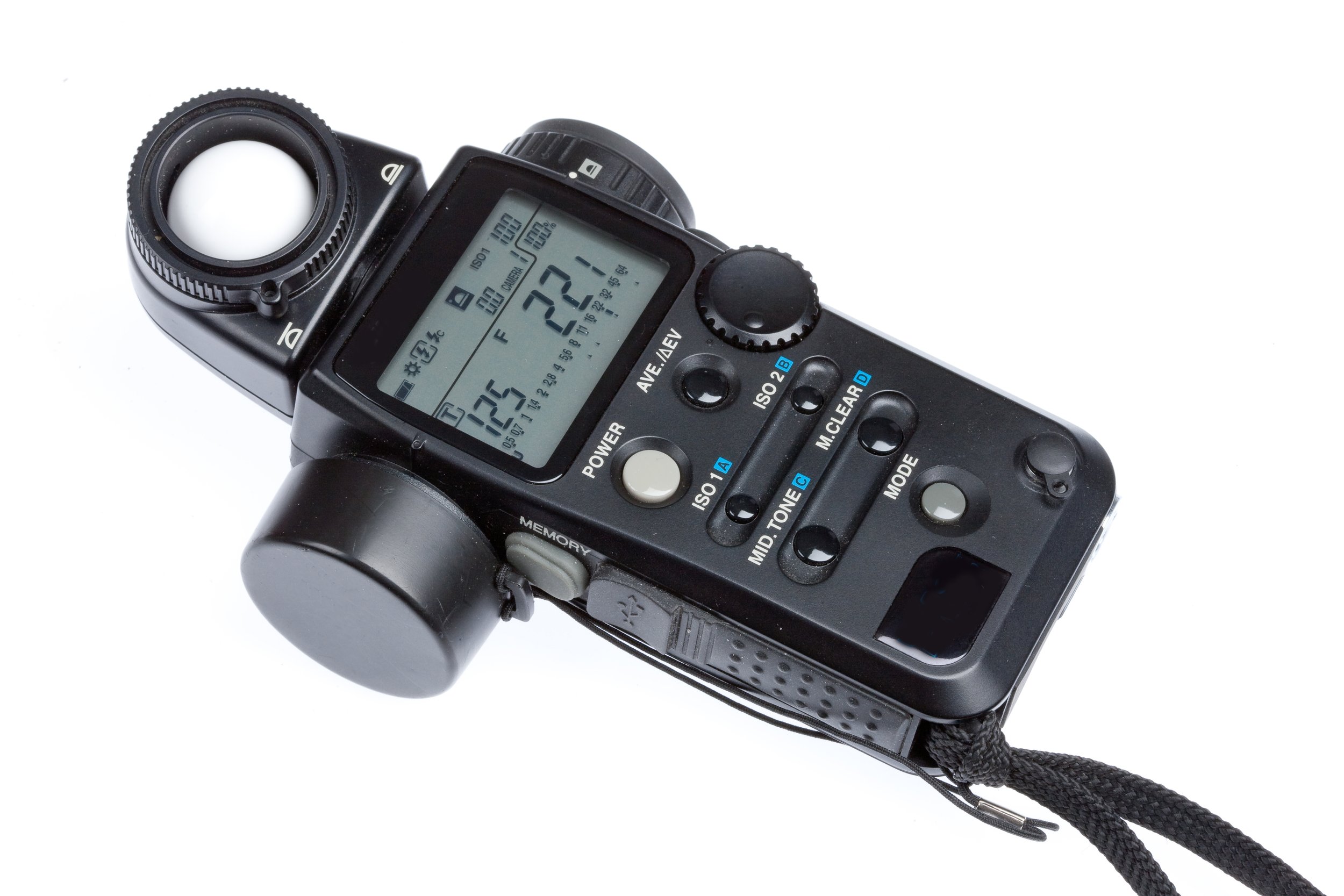Do I Need An Incident Light Meter?
/Hello folks.
I still hear this question from time to time and the answer as it often is, is it depends.
It depends on what you want to do and be as a photographer. I emphasize the criticality of learning to see middle grey in my mentoring programs, so you can understand what is influencing your reflected light meter that is built into your camera.
However, there is no tool that eliminates all the potential exposure errors encountered with reflected light meters than an incident light meter.
More Work, More Involvement
The real challenge appears to be that an incident light meter is more work. You have to be where the subject is or be in a position receiving the same light as the subject and point the incident light meter at the light source.
You typically choose one or two settings in your incident meter, say ISO and aperture when depth of field is an issue, or shutter speed and ISO when subject movement is an issue. When you take a meter reading, a good meter will tell you what exposure to set in your camera. If you then decide that you want a higher ISO or a longer shutter speed, the meter will tell you the proper matching value to achieve a correct exposure for the EV value it measured.
Then you make those settings on your camera. As incident light metering is a deliberate action, you will likely have the camera in manual mode. This makes it easiest to match the camera settings to the light meter’s guidance. You do have to remember that you CHOSE to do this so if the reflected light meter in the camera starts telling you that things won’t work you have to learn to ignore this badgering and go with what you chose.
This step can be very hard for some folks, particularly those who have become dependent on letting the box do the thinking.
Don’t Forget the Flash
Any decent incident light meter available today can also do flash metering. In this case, you point the meter at the flash from the subject position and fire the flash. Since most folks these days are using radio triggers, this is really easy as you just carry the transmitter with you. It’s particularly helpful when you are using multiple flashes and want to work on achieving specific lighting ratios. This means no TTL flash but also means that any compensations needed because TTL flash is based on reflective metering are not needed. This can be a real benefit if your subject is predominantly white or predominantly black.
Bettering Your Ability to See
The simple fact is that as you learn to use your incident light meter regularly, your own skills in becoming a human light meter improve as well, making judging a scene and its lighting faster and less stressful. It is true that the reflected light meters in our modern cameras are excellent and as over 90% of scenes average out to middle grey, most exposures in the auto and semi auto modes are great in the first shot. However, for the photographer who aspires to expertise in his or her craft, no form of automation makes that better.
A photo can never be its best without your ability to see and to make decisions about light anymore than a barbecue has value without the things that make it successful such as coals and the necessary items to make it hot. Photography is a craft, and the more you understand your craft, the better the photographer you can be.
What Do I Buy
If you do not already have an incident light / flash meter, the Sekonic L-308-U is highly recommended. It is small, light and very inexpensive considering its capability. You can find it at B& H through this link
Wrap Up
Please become a member on Patreon to help support this channel. A big thanks to all the existing Patreon members! Send in comments or questions, I read and respond to all. If you shop with B&H Photo Video, please use the link on the main page as it pays me a small commission and does not cost you anything to do so. Thanks again and we will see each other again soon.









